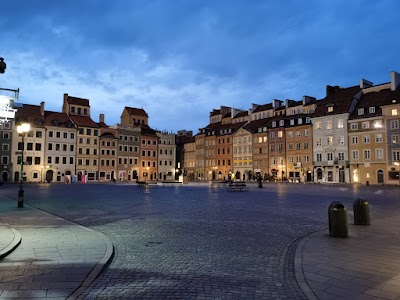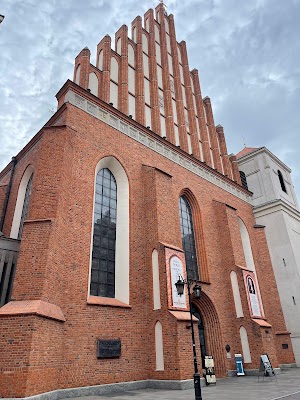Palace of Culture and Science (Pałac Kultury i Nauki)
Overview
The Palace of Culture and Science in Warsaw, Poland, is not just a high-rise building but a captivating symbol of the city. Conceived in the early 1950s during Poland's time under Soviet influence, this monumental structure was a gift from the Soviet Union, designed to strengthen bilateral ties and showcase Soviet power. Joseph Stalin, the leader of the Soviet Union at the time, was deeply involved in the decision-making process for this iconic building.
Construction of the Palace began in 1952 and concluded three years later, with the esteemed Soviet architect Lev Rudnev at the helm. Known for his grand-scale Stalinist designs, Rudnev drew inspiration from American skyscrapers while incorporating elements of classic Soviet architecture. A team of Polish architects and engineers collaborated on this ambitious project, which saw around 3,500 Soviet workers living in specially constructed camps during its development.
The building's construction utilized a blend of local and imported materials, including steel and concrete, which were transported to Warsaw, allowing for rapid progress. Upon its completion, the Palace stood at a towering 237 meters, making it the tallest building in Poland. With 42 floors and more than 3,000 rooms, it houses a variety of facilities, including offices, sports clubs, cinemas, museums, and even a swimming pool. Visitors can enjoy breathtaking views of Warsaw from the observation terrace on the upper floors.
Architecturally, the Palace is a rich tapestry of influences, primarily featuring socialist realism intertwined with Renaissance and Baroque elements. This eclectic mix was intended to convey an aura of progress and grandeur. Its façade is adorned with decorative spires, large clocks, and intricate sculptures, symbolizing the might and cultural wealth of the Soviet Union.
The Palace was inaugurated in 1955 amid mixed reactions from the Polish populace. While many admired it as an architectural masterpiece and a beacon of progress, others regarded it as a stark reminder of Soviet dominance. Despite the controversy, the Palace swiftly became a pivotal part of Warsaw's skyline and a vibrant hub for cultural and scientific activities.
Over the years, the Palace of Culture and Science has undergone numerous renovations to preserve its structure and adapt to contemporary needs. Today, it thrives as a multifunctional space, drawing both locals and tourists alike. Various events, festivals, conferences, and exhibitions are held within its walls, making it a lively center for the arts and sciences.
Ultimately, the Palace of Culture and Science stands as a testament to a complex era in Polish history. Initially a symbol of Soviet influence, it has since been embraced as an integral part of Warsaw’s urban landscape. Today, the building embodies a fascinating blend of historical significance and modern-day functionality, representing both the challenges of the past and the aspirations for the future of Poland.






